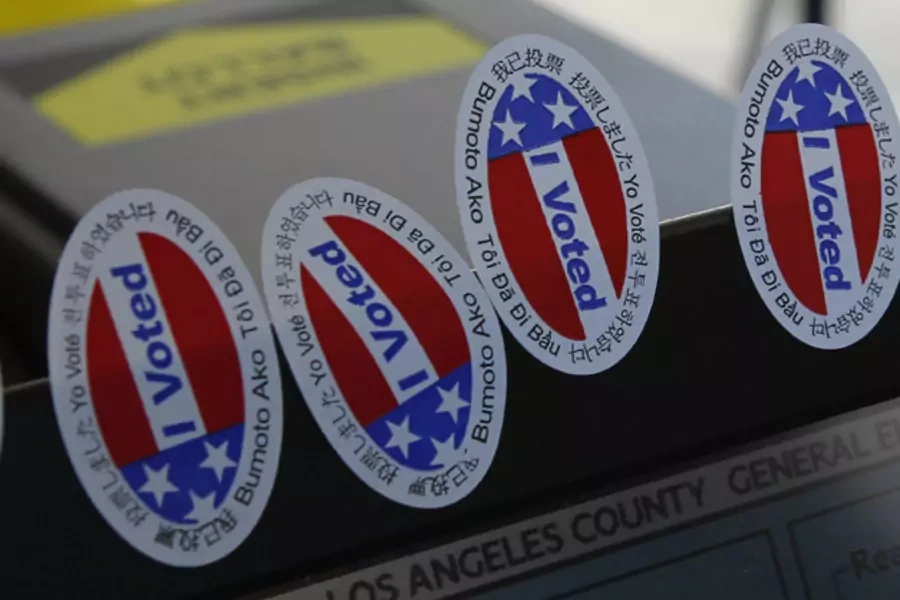Policy Initiative Spotlight: Trying to Depolarize Congress

More on:
Congressional polarization has steadily increased over the last twenty-five years, according to research by political scientists Howard Rosenthal and Keith Poole. Their analysis indicates that the U.S. House and Senate are more polarized today than at any other time since the end of Reconstruction. The 2012 election continued this trend.
Polarization matters because starker differences between the parties normally make problem solving more difficult. Party leaders become increasingly beholden to the collective will of more extreme caucuses and less able to compromise and build consensus for balanced legislation. “Everybody is afraid to give an inch,” according to Ohio representative Steven C. LaTourette.
There are a variety of explanations for rising polarization; a commonly cited one is gerrymandering. Gerrymandering is drawing political boundaries to secure an advantage, and it has a long and ignominious history. In 1812, Massachusetts Governor Elbert Gerry signed a redistricting bill that heavily favored his party. Despite this etymology, the practice has deeper roots in America, and even can be found in ancient Rome where censors manipulated membership in the tribal assembly after each five year census.
But the science of building safe voting blocs has made great strides since Caesar’s day. Modern demographic data and sophisticated mapping software have allowed state leaders to draw bizarrely shaped districts with skewed voting patterns.
While most state legislatures draw voting districts, not so in Iowa. Since 1982, Iowa’s nonpolitical Legislative Service Agency, responsible for things such as maintaining the legislature’s library, has drawn districts. Iowan laws also limit the carving up of municipalities and counties. With political boundaries not drawn by partisan hands, Iowa has generally had more competitive House races. In 2010, California voters decided to hand district drawing power to a commission of citizens, but some have criticized the resulting districts, seeing undue influence by party leaders.
Gerrymandered districts heighten the influence of primaries; when one party holds an overwhelming advantage in registered voters, the general election can be a mere afterthought. Since primaries have lower voter turnout skewed towards party bases, more extreme candidates often have an advantage. While statewide races, such as for a Senate seat, cannot be gerrymandered, primary voters can still hold disproportionate sway in states where one political party enjoys a large majority,
In an effort to address this, California voters passed Proposition 14 in 2010 to amend that state’s constitution to replace traditional partisan primaries with non-partisan blanket primaries. Under this system—similar to one adopted by the state of Washington in 2004—the top two vote getters in the primary earn a spot on the general election ballot, regardless of party affiliation. Louisiana adopted a similar, run-off system in 1978.
In 2012, five of California’s fifty-three races pitted incumbents against challengers from the same party. Two Democrats, Pete Stark and Joe Baca—both representing districts with more than a 20 percentage point advantage in Democratic party registration—lost to Democratic challengers who had garnered fewer votes in the primary round. Were these triumphs for moderation? Perhaps. Rosenthal and Poole’s analysis assigned a “DW-Nominate” score—basically a polarization index—to each member of the House; Stark had the sixth highest score among Democrats, but Baca’s was relatively moderate, ranking 140th out of 193 Democrats. Both representatives were targets of an anti-incumbency superPAC.
So far the results of these efforts are clearly modest, and have done little to reverse the trend towards rising political polarization in Congress. And it’s not clear that other states will follow their lead. In a ballot measure in November, for example, Arizona voters rejected a top-two primary system.
More on:
 Online Store
Online Store